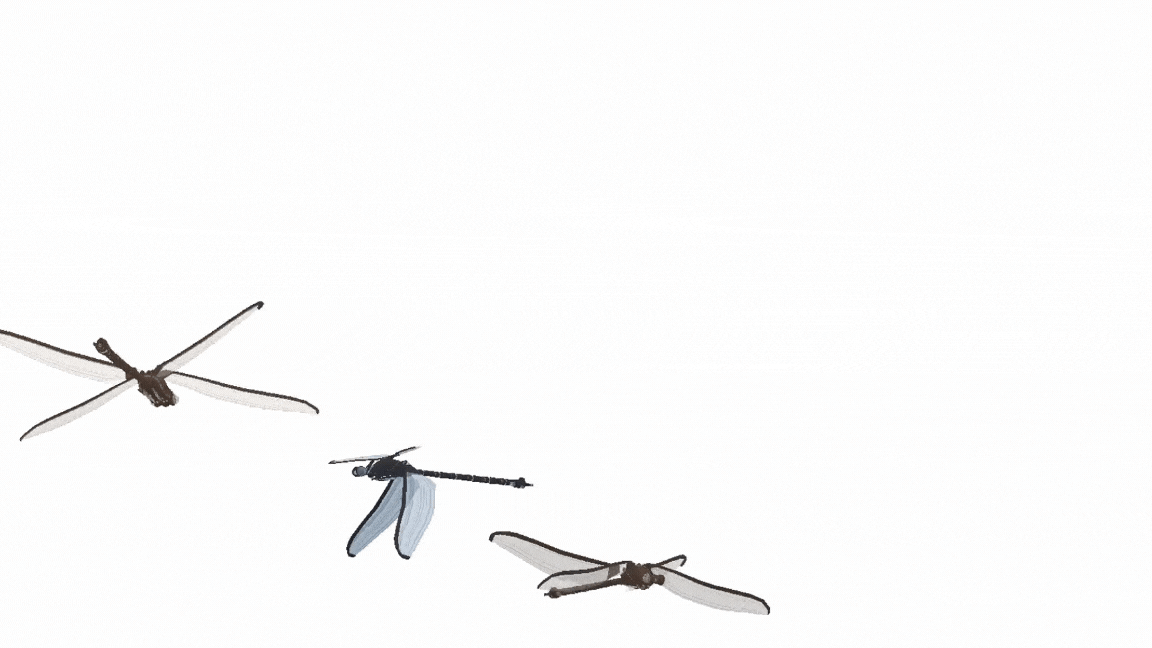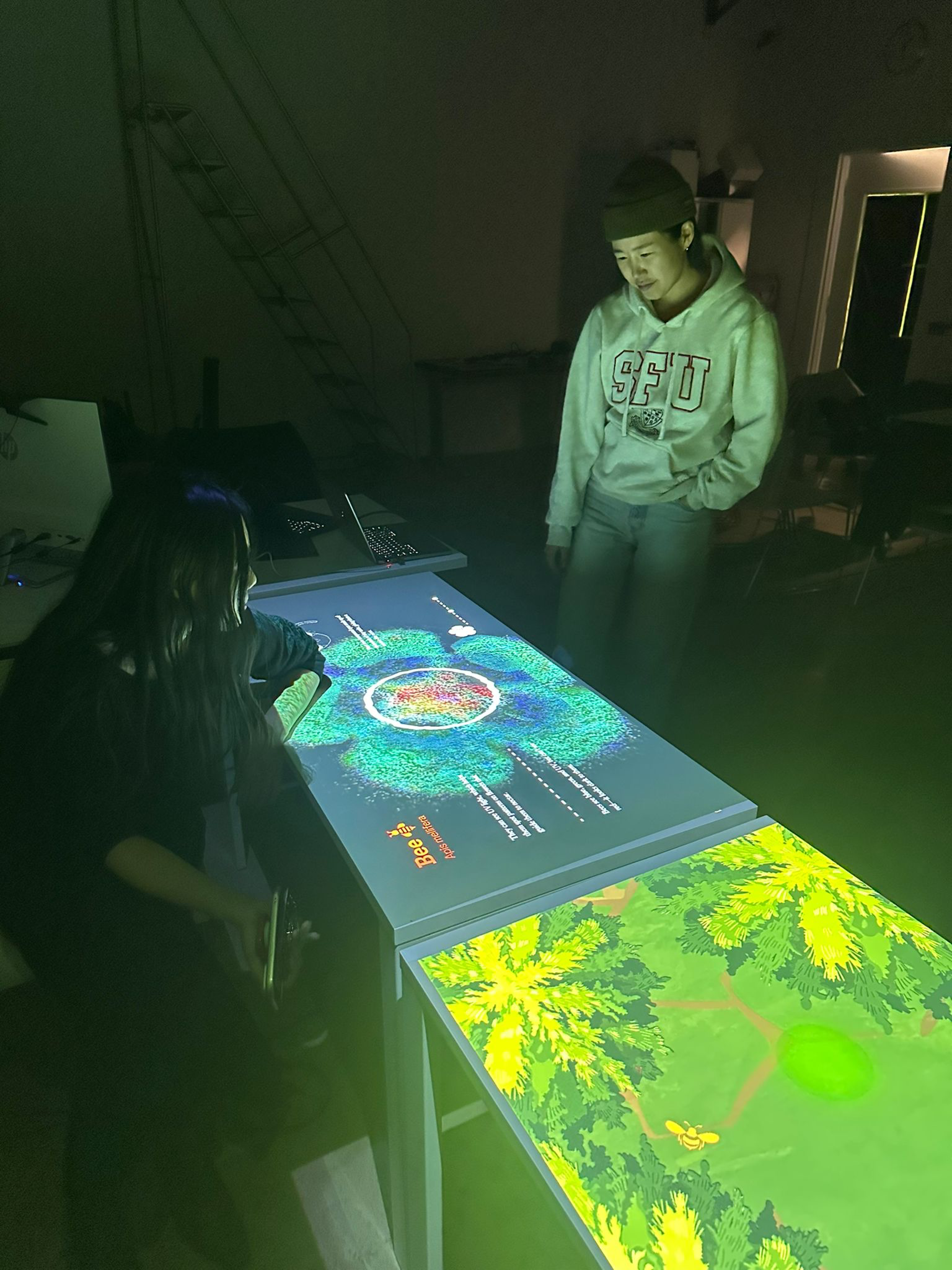
THE ARTHROPOD ODYSSEY
WITNESS THE REMARKABLE COMPLEXITIES OF INSECT LIFE
In the era of the Anthropocene, acknowledging the ecological significance of all life forms has never been more critical - especially arthropods. Using the Bug Hall at the Carnegie Natural History Museum as a pivot point, this exhibit aligns with the museum’s mission to “deepen wonder and advance understanding of our natural world - past and present - in order to embrace responsibility for our collective future.” This interactive experience seeks to transform perceptions of arthropods, encouraging visitors to appreciate their integral role in sustaining ecosystems. By taking participants on a multi-sensory journey that transcends temporal boundaries - connecting the past, present, and future - we aim to foster deeper engagement with these often-misunderstood creatures.
Project Type
Immersive, Multi-modal Experience Design
Immersive, Multi-modal Experience Design
Team
Eldar Gilmanov, Audrea Guo, Deeya Parikh
Eldar Gilmanov, Audrea Guo, Deeya Parikh
Year/Duration
Fall 2024, 6 weeks
Fall 2024, 6 weeks
Role
UX Researcher, UX Designer
UX Researcher, UX Designer
Tools
Figma, Adobe Aero, Adobe After Effects, Arduino
Figma, Adobe Aero, Adobe After Effects, Arduino
Skills
UX Research, Testing, Rapid Prototyping, Visual Design, Interaction Design
UX Research, Testing, Rapid Prototyping, Visual Design, Interaction Design
PROBLEM SPACE
Museum CX
Museums are designed to inspire curiosity and learning, yet traditional exhibits often struggle to foster meaningful engagement. Visitors frequently encounter static displays, dense text panels, and disconnected exhibits that make it difficult to form a cohesive narrative. This is particularly evident in spaces like the Bug Hall at the Carnegie Museum of Natural History, where arthropods - despite their critical ecological roles - are often met with fear, disinterest, or misunderstanding.
RESEARCH QUESTION
How Might We
How might we demonstrate the vital ecological roles of arthropods to foster a positive perception among families visiting the Carnegie Museum of Natural History?
SOLUTION
Multi-modal Experience
The Arthropod Odyssey transforms museum engagement by integrating augmented reality (AR) for wayfinding and interactive storytelling, guiding visitors through the evolutionary journey of arthropods. Inside the Bug Hall, three immersive stations bring insect behaviors to life: SignalScape uses haptic vibrations to simulate bug communication, VisionScape employs projection mapping to replicate insect vision, and TerraScape features a responsive storytelling table illustrating ecological roles. By making learning tactile and interactive, this experience fosters curiosity, empathy, and a deeper appreciation for arthropods’ essential roles in nature.
REFINEMENT
Concept Video
The video demonstrates the ideal scenario curated for the visitor following The Arthropod Odyssey Tour.
Process Overview
1. EXPLORATION
4 hr Observational Research
6 Interviews
Desk Research
SWOT Analysis
2. GENERATION
Design Principles
Concept Generation
Storyboards
System Diagrams
Journey Maps
3. REFINEMENT
AR Tour Map & Guide
AR Gamification
Tactile Interaction
Visual Interaction
Responsive Interaction
GENERATION
Key AR Interactions
The Bug Hall is a rich treasure within the museum, yet many visitors are either unaware of its presence or find it challenging to locate. Even for those who do find it, the exhibit often feels disconnected from the museum’s broader narrative, leaving the evolutionary journey and ecological importance of arthropods under-explored.
I. Interactive Map, AR App
This AR experience bridges that gap by transforming the way visitors navigate and engage with the exhibit. Using an AR-enabled app, visitors follow a dynamic, intuitive path enhanced with digital markers and visual guides overlaid in the physical space.
II. Dinosaur Hall, AR Tour Guide
As they museum goers from one exhibit to another, the app reveals the evolution of arthropods through immersive 3D models and interactive, context-rich stories. These features illustrate the critical roles arthropods have played in sustaining ecosystems across millennia, from prehistoric eras to the Anthropocene.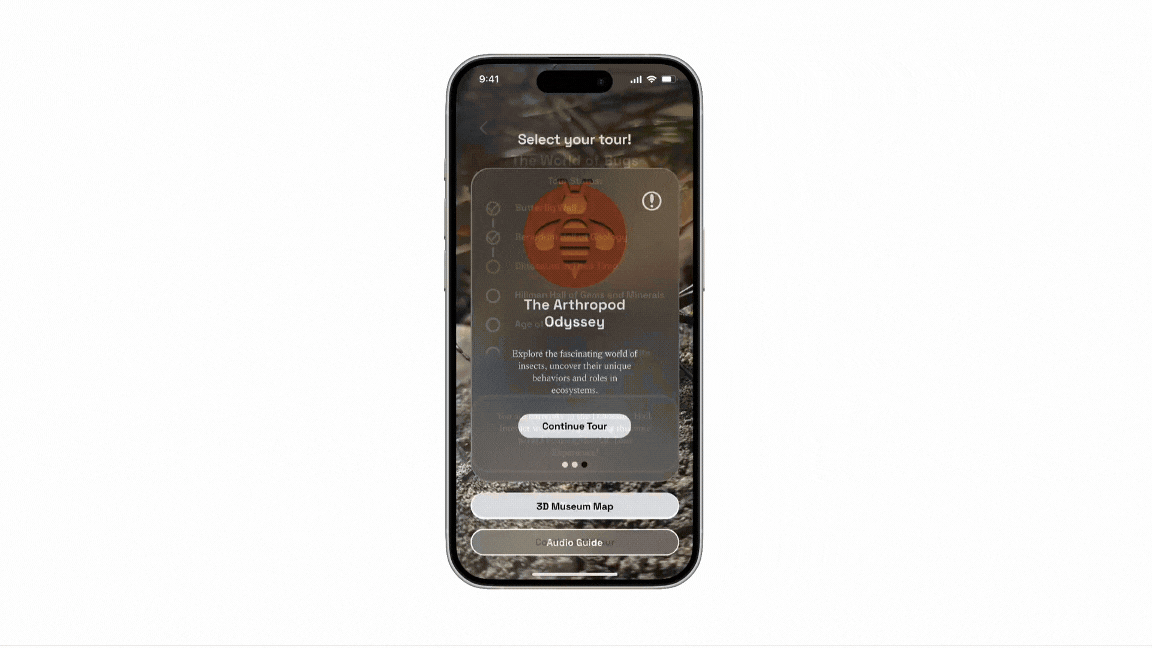
III. Gem Hall, AR Gamification
Visitors are invited to explore the extraordinary adaptations that make arthropods so unique, such as their exoskeletons, compound eyes, and specialized appendages through gamification. By participating in interactive challenges and activities, users can uncover how these features have evolved over time to help arthropods survive, thrive, and play essential roles in their ecosystems.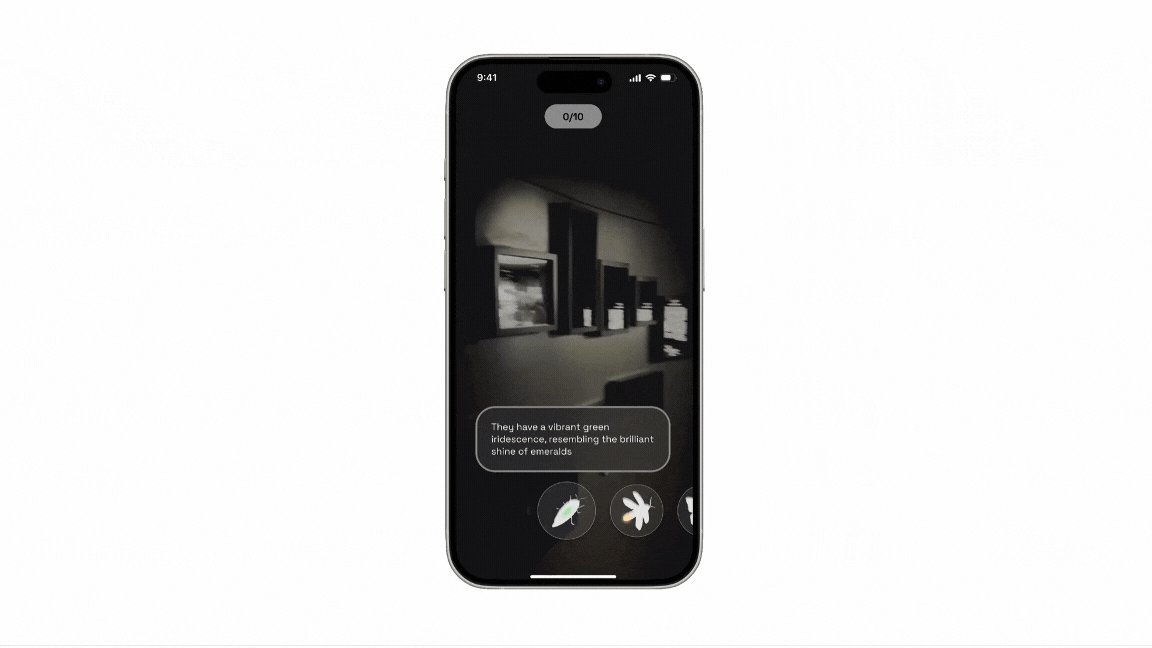
Why this matters
This experience not only improves wayfinding but also deepens visitors’ understanding of how arthropods have evolved and sustained ecosystems over time. By tying individual exhibits into a cohesive, larger narrative, the museum fosters a richer, more meaningful exploration of the natural world.
GENERATION
Key Bug Hall Interactions
How do arthropods communicate within their communities, how do they perceive the environment in ways so vastly different from humans, and what role do they play in maintainging ecological balance?
The Immersive Bug Communication Portal changes this by offering a two-step, multi-sensory experience. This interactive journey blends physical computing, haptic feedback devices, and projection mapping to bring insect communication to life. Visitors walk away not only informed but also with a newfound empathy for arthropods, understanding their complex methods of interaction and survival.
I. Bug Hall, SignalScape
Visitors engage with SignalScape, a tactile interaction that replicates the vibrations bugs use to communicate, allowing them to “feel” the world through these signals.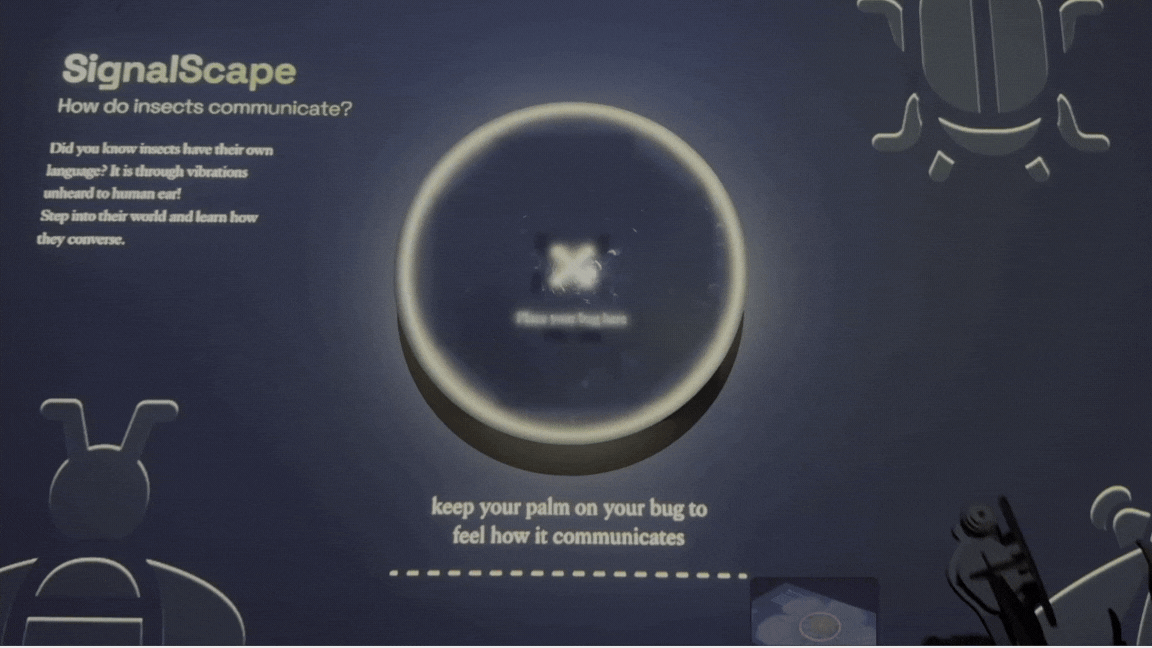
II. Bug Hall, VisionScape
VisionScape uses visual projections to simulate how bugs perceive their surroundings—showcasing features like compound vision, sensitivity to ultraviolet light, and more.
III. Bug Hall, TerraScape
The critical ecological roles of insects such as pollination and maintaining predator-prey balance - are often overlooked, leading to a diminished appreciation for their importance in sustaining ecosystems.The TerraScape Experience addresses this by using projection mapping, real-time visualization software, and computer vision to create an engaging and educational experience. Visitors place bug-shaped models on the table, which dynamically respond by projecting visualizations that illustrate each insect’s ecological role.
For instance, they can see how a bee aids in plant growth through pollination or how a an invasive beetle harms the environment. These projections map the intricate connections insects maintain within ecosystems, showcasing the balance and interdependence of their roles.

Why this matters
By immersing visitors in the sensory world of arthropods, this exhibit fosters a deeper appreciation for their complexity, encouraging empathy and respect for the roles they play in ecosystems. It transforms how visitors view insects, inviting them to see the natural world from a whole new perspective while bridging the gap between observation and understanding.
RESEARCH
Observational Research Insights

A sense of excitement amongst visitors in learning about fun facts about bugs and a keenness in sharing their own fun facts.

A desire to know more about bugs and for a deeper sense of interaction with the interesting looking bugs.

Inaccessibility in viewing bugs placed on pedestals and in visibility of the information cards within the pedestal, especially for children.
RESEARCH
User Interview Insights

A want to learn more about the bugs they were seeing and wished for richer content and a deeper understanding of the role of bugs in the their lives.
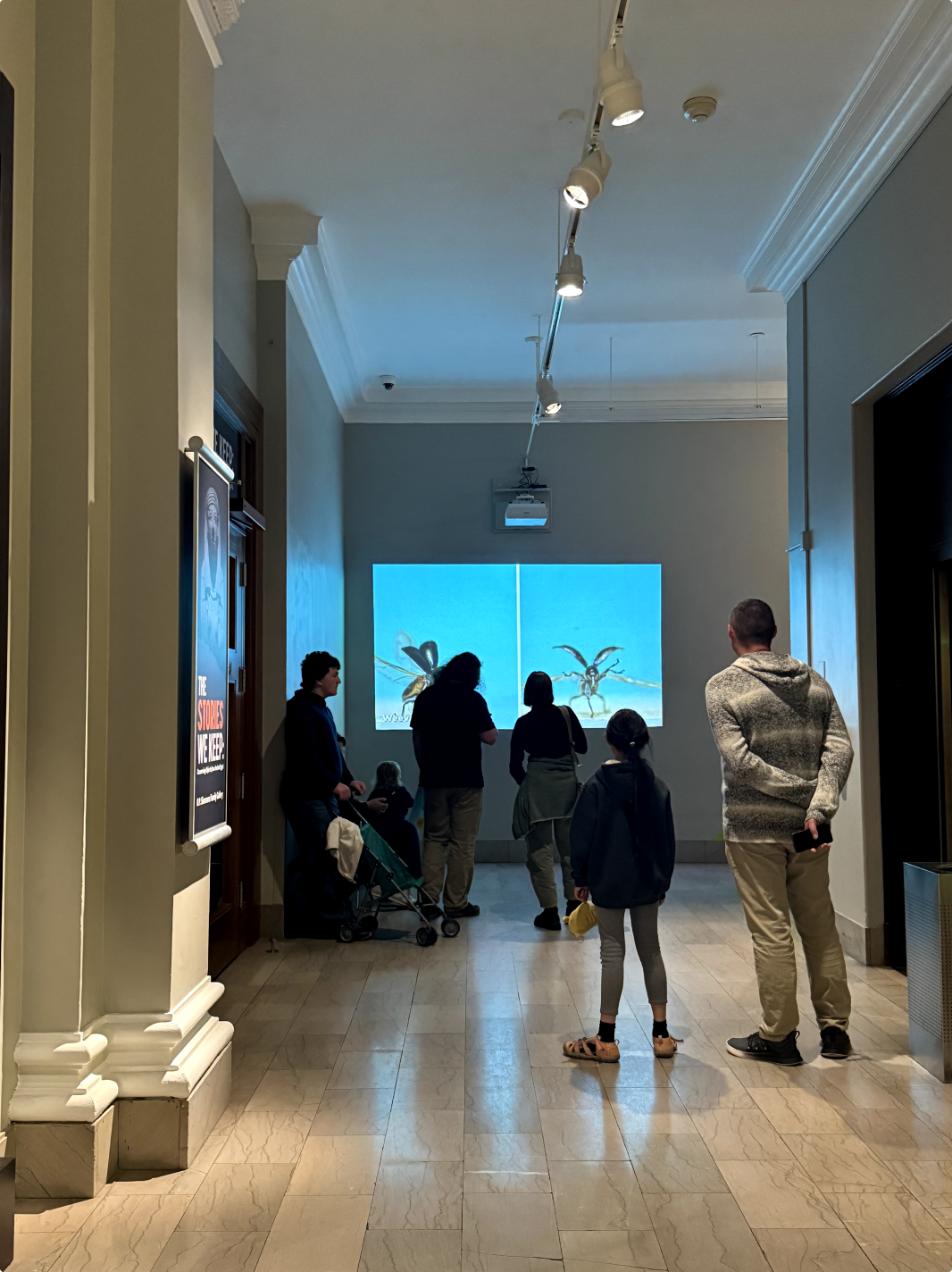
A belief that the exhibit has the potential to change perceptions about bugs and their significance in the ecosystem.

The curation and the display of the bugs could be redesigned to include more accessible and informative, and that the location of the bug hall itself could be made more visible.
GENERATION
Design Approach
The intention of the experience is to inspire seeds of transformation toward the perception of bugs in the environment. Rather than seeing them as just “pests” but as integral agents in protecting and conserving the network of ecologies.
We aim to do this by designing a series of interactive experiences that engage tactile and visual senses that elucidate the remarkable complexities of arthropod life, thereby fostering a deeper understanding and appreciation for their ecological role.
GENERATION
Design Principles
Constructivist Experience that prioritizes learner-centered, responsive and reflective interactions that help museum goers form deeper connections with content

Enhanced Accessibilty
The exhibit is designed to be both physically accessible and informatively engaging, ensuring visitors of all backgrounds can connect with the content on multiple levels.

Creative Collaboration
Encourage conversations and shared discoveries among museum visitors, offering a unique opportunity to engage with bugs’ in a manner that fosters collective learning.

Reflecion-in-Action
To encourage visitors to slow down and reflect on the information they interact with, ensuring a deeper connection with the exhibit’s content and its broader ecological implications.
GENERATION
The Arthropod Odyssey Journey Map
The experience is designed as a journey through various exhibits in the museum, culminating in the Bug Hall. Each checkpoint along the way incorporates a unique technology, highlighting one or more design principles to enhance the understanding and appreciation of arthropods, ultimately supporting a richer, more engaging learning experience about bugs.

GENERATION
The Bug Hall Journey Map
Many visitors are unaware of how bugs communicate or perceive their environment, and the critical ecological roles insects play are often overlooked. These interactive experiences use multi-sensory engagement to bridge gaps in understanding. By replicating bug communication through tactile vibrations, showcasing how bugs perceive the world through visual projections, and illustrating their roles through responsive visualizations.

Takeaways
The Arthropod Odyssey presents an opportunity to reframe how museum visitors perceive and interact with arthropods, encouraging empathy, understanding, and a deeper appreciation for their critical ecological roles. By combining innovative technologies such as AR navigation, tactile sensory experiences, and interactive storytelling, this project bridges the gap between observation and engagement. It transforms visitors’ understanding of arthropods from passive curiosity to active participation, sparking dialogue and curiosity about their interconnected roles within ecosystems.
The multi-sensory, interactive design not only enhances accessibility and engagement but also fosters reflection, collaboration, and shared learning. These experiences align seamlessly with the museum’s mission to advance the understanding of our natural world while inspiring a collective responsibility toward the future.
The multi-sensory, interactive design not only enhances accessibility and engagement but also fosters reflection, collaboration, and shared learning. These experiences align seamlessly with the museum’s mission to advance the understanding of our natural world while inspiring a collective responsibility toward the future.
Next Steps
I. Conduct iterative user testing to refine usability, engagement, and effectiveness. Launch a pilot version of The Arthropod Odyssey and gather visitor feedback through surveys and observations. Use insights to refine the experiences and address any gaps in understanding or accessibility.
II. Explore additional applications of this multi-sensory, interactive approach to other areas of the museum, such as exhibits on botany or sea creatures, creating a cohesive narrative throughout the museum.
IV. Partner with entomologists, ecologists, and technology developers to ensure the scientific and technical accuracy of the content and delivery.
This journey is just the beginning. The Arthropod Odyssey stands as a model for how technology and thoughtful design can redefine museum experiences, fostering a lasting connection between visitors and the natural world.
II. Explore additional applications of this multi-sensory, interactive approach to other areas of the museum, such as exhibits on botany or sea creatures, creating a cohesive narrative throughout the museum.
IV. Partner with entomologists, ecologists, and technology developers to ensure the scientific and technical accuracy of the content and delivery.
This journey is just the beginning. The Arthropod Odyssey stands as a model for how technology and thoughtful design can redefine museum experiences, fostering a lasting connection between visitors and the natural world.
